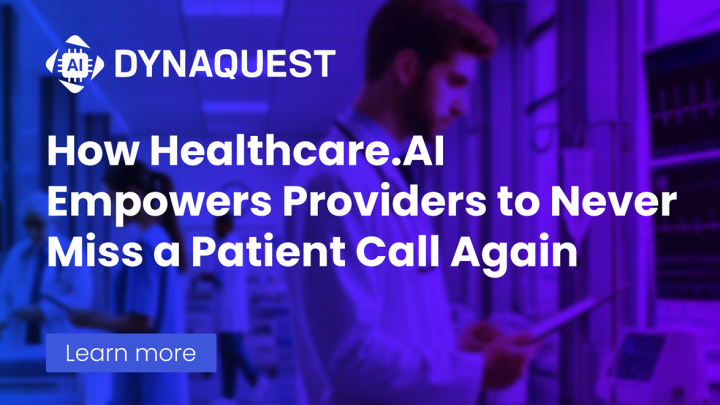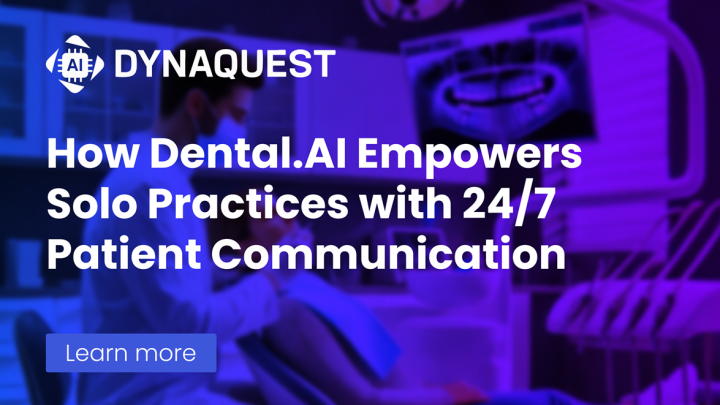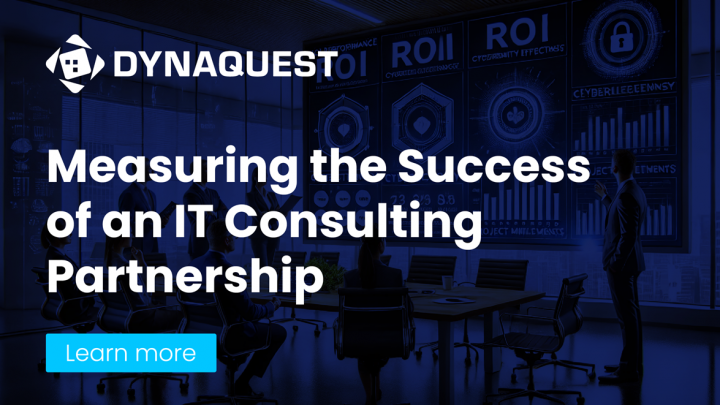Solo, But Always On: How MediQuest.AI Empowers Providers to Never Miss a Patient Call Again
Introduction: In Healthcare, Missed Calls Cost More Than Revenue A missed patient call isn’t just a lost appointment—it’s a potential delay in diagnosis, a disruption in care continuity, and, in some cases, a risk to patient safety. For solo healthcare providers, the stakes are even higher. With no support staff to screen after-hours calls or confirm bookings, every ring of the phone carries the weight of both a clinical and business opportunity. Yet many solo practitioners are still relying on outdated voicemail systems that turn away patients who need timely access or clear answers. In an era where 72% of patients expect to communicate with their provider outside of traditional business hours, the gap between expectation and reality can be a silent killer of patient satisfaction and retention.¹ Healthcare.AI steps into this gap—not as a replacement for human care, but as a precision-engineered tool that keeps solo providers always available, without being always on. The Hidden Crisis: Communication Breakdowns in Solo Healthcare Practices Solo healthcare professionals face a unique challenge: delivering personalized care while simultaneously managing the administrative load of a full-time front desk. Without dedicated support, providers often miss: A 2022 study by Accenture found that 47% of patients have switched providers due to poor communication, not clinical issues.² Patients now prioritize convenience, clarity, and responsiveness almost as much as care quality. For solo clinics, these breakdowns don’t just create gaps in service—they create churn. Why Voicemail Doesn’t Work Anymore Many providers assume voicemail is a sufficient fallback. It’s not. Today’s patients don’t leave messages. They don’t wait. According to consumer data, 80% of callers sent to voicemail never leave a message, and nearly 60% will try another provider immediately.³ In healthcare, this is more than a customer service problem—it’s a breach of trust. Consider: If those calls aren’t answered—or at least acknowledged in real time—you’ve likely lost the patient, and in some cases, created clinical risk. Healthcare.AI ensures that no call goes unanswered, no inquiry ignored, and no patient left wondering if their provider is reachable. What Is Healthcare.AI and What Does It Replace? Healthcare.AI is a modular, AI-powered virtual front desk designed for solo and small practice healthcare providers. It provides seamless 24/7 communication coverage across phone, SMS, and chat—without requiring any extra staff. Here’s what it replaces: Its core functions: It acts not as a cold automation layer, but as a dynamic, patient-friendly extension of your practice, ensuring responsiveness without human overload. Solo Provider Without AI vs. With Healthcare.AI Function Without AI With Healthcare.AI Call Handling Missed or sent to voicemail 24/7 AI response + routing Appointment Scheduling Manual, during hours only Automated, round-the-clock Follow-Up Reminders Inconsistent or forgotten Auto-generated, smart scheduling Patient Satisfaction Variable Measurably improved This transition from reactive to proactive communication creates a patient experience that builds loyalty, improves adherence, and increases referrals—all without expanding payroll. 24/7 Availability Without Burnout One of the biggest myths in solo practice is that being responsive means being constantly available. With Healthcare.AI, that’s no longer true. The AI handles: And it does so without waking you up at midnight. This means solo providers can: It’s not just automation—it’s protection. For your time, your patients, and your sanity. Omnichannel Response: Call, Text, Chat—All Synced Patients don’t just call anymore. They message. They tap. They expect flexibility. Healthcare.AI supports: No matter the channel, the AI keeps everything synced in one secure dashboard. You see the full picture of patient interaction across platforms, with no information loss or duplication. Bonus: Patients get to choose their preferred method of communication, creating a more personalized, accessible experience—a key driver of satisfaction and loyalty. Case Study: How One Solo Provider Doubled Patient Retention with Healthcare.AI Solution: Results (in 60 days): Intelligent Appointment Scheduling and Calendar Sync The typical solo practitioner spends hours per week on scheduling tasks—often juggling calendars, responding to booking requests, and managing reschedules. This not only drains time but increases the likelihood of errors that damage credibility. Healthcare.AI eliminates the chaos with: No more missed opportunities. No more schedule gaps. Just a smarter way to stay booked—and balanced. Follow-Up That Actually Follows Through Many healthcare journeys don’t end at the appointment—they extend into lab tests, medication adherence, and follow-up visits. Yet most solo providers lack a reliable system to stay connected beyond the visit. These touchpoints are not just logistical—they’re relationship builders. And with no extra time spent by the provider, they represent one of the highest-leverage investments in patient retention. Effects of AI-Driven Follow-Ups on No-Show Rates Follow-Up System No-Show Rate (%) Manual / Paper-Based 23–27% One-off SMS Reminders 15–18% Healthcare.AI (Multi-Touch, AI-Timed) 5–8% That’s not just saved time—it’s recovered revenue and protected continuity of care. Built with Privacy in Mind: HIPAA-Compliant by Default One of the biggest concerns among healthcare providers when adopting tech is compliance—and rightfully so. Healthcare.AI is built with privacy and legal integrity at its core: Whether you’re a family physician, pediatric specialist, or behavioral health provider, Healthcare.AI respects patient trust as much as you do. Cost Efficiency: No Extra Staff, No Overtime Hours The economics of solo practice are tight. Hiring a receptionist means salaries, benefits, and turnover costs. Call centers? Pricey and impersonal. Healthcare.AI offers a fixed monthly investment with exponential value: Table: Monthly Cost Comparison Service Type Estimated Monthly Cost In-House Receptionist $3,200+ (salary + benefits) Call Center (outsourced) $1,200–$2,000 Healthcare.AI $200–$400 (flat rate) And unlike humans, AI scales. Whether you’re seeing 5 patients or 50 a day, it responds instantly—without fatigue. Fast Setup, Zero Tech Headaches One of the best things about Healthcare.AI is how easy it is to get started. There’s no complex onboarding or IT team required. Key setup features: Even providers with no technical background can go live in a day and start seeing results within the first week. For the Long Haul: Scalable as You Grow Your practice might be solo today—but it doesn’t have to stay that way. Whether you plan to: Healthcare.AI is ready. It scales with: So you don’t outgrow your technology—you grow…









